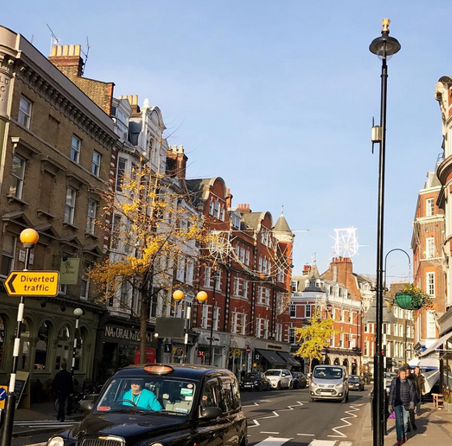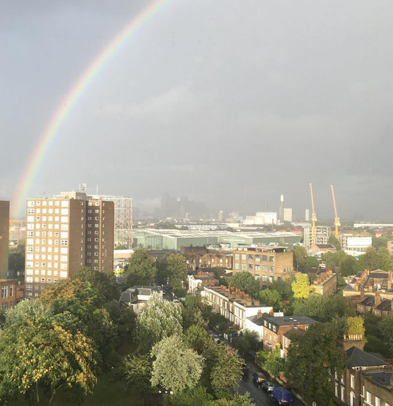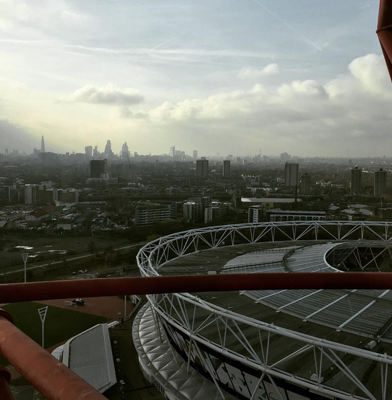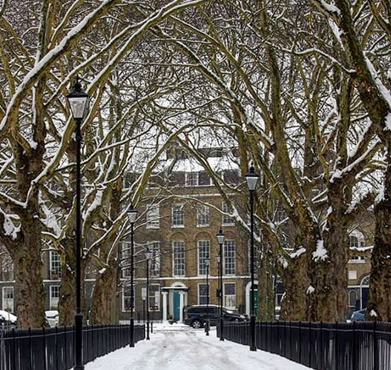The past 20 years has seen five prime ministers, an incredible growth in online usage, one of the biggest banking crises and finally a vote to abandon the European Union. All of this political and atmospheric change has most definitely affected the London housing market, but how?
Here we break down exactly how all of this uprooting has affected London’s prestigious market, and what the future could possibly hold.
Marylebone

The street made famous as a place of wealth by classic family board game Monopoly, London’s Marylebone has worked hard to recover from a dip in property value during the 1980s and early 90s.
While the area has always been frequented by actors, doctors and other well established professionals, a decade of neglect from landlord Howard de Walden led to the high street losing its ‘country town in the city’ appeal.
At its lowest ebb, the high street was abandoned by the boutiques and high end stores that had once ruled the area, and was instead filled with empty spaces and charity shops.
It was due to this neglect that property prices began to slide, and businesses refused to invest in the once famously upmarket area.
Thankfully the Walden estate has realised the consequences of its neglect, and smart business investments led to the return of Waitrose, and many more affluent stores and chains.
As most of the homes located in Marylebone are listed as historical Georgian homes, despite its low during the period of neglect, house prices were still high in comparison to other areas in London, and did not suffer significantly in the face of the financial crisis.
During the last decade, Marylebone’s property value has continued to steadily rise with the average home costing £1.7 million, compared to £350,000 in 2000.
Sand’s End
Traditionally speaking, Sands End was home to less than appealing industrial factories and estates. Alongside this the area was not well connected to the capital and so house prices were reasonably low in comparison to other London boroughs.
However, due to the investment of housebuilding company St. George and the support of then mayor, Ken Livingston, the area has seen a huge rise in value beginning in the latter years of the 1990s.
The construction of the Imperial Wharf was a welcome turning point for the area, as high end restaurants and stores began to find a home on the wharf.
With a series of new homes and apartments having been built in the last decade, house prices have risen significantly from an average of £300,000 in 2000, to £1 million in 2016. Alongside this, its connection to nearby Chelsea has meant that the two areas have integrated significantly, and similar to Marylebone, it has developed into a hub for high earners and professionals.
Peckham

Made famous by Trotters Independent Traders, Peckham was once a blight on the London map, and yet as with a lot of the English capital it has seen a rejuvenation in the recent decade.
With the local council having rebranded the area as a slick urban hotspot, many clubs, independent stores and restaurants have flocked to the once run down area.
The area has also welcomed in an age of art galleries, pop up markets and gig venues in an attempt to embraces its bohemian image.
Alongside this now booming culture, transport has been improved and housing prices have risen. In 2000, the average home was valued at under £120,000, today however the property prices have risen to well above £500,000 in value.
As the Peckham Rye high street has now been listed as an area for conservation, property prices are predicted to follow a trend of gradual rises in the forthcoming years, with the area having grown in stature since its days as the home of the two most well-known dodgy dealers.
Stratford

Stratford always had a lot of potential, but rejuvenation was a slow burner throughout the 90s with the local council struggling to fund any new infrastructure.
Of course, all that changed once London was awarded the 2012 Olympics, and suddenly Stratford became a hub of construction with millions of pounds being invested in the area.
Altogether, around £13 billion has been spent on the township transforming it into a city within itself.
Aside from the incredible Olympic stadium, a cultural quarter, a new campus that adjoins with the University College London and a 600-seat theatre have all been built at the once down and out Stratford, bringing over 6,000 jobs to the area.
Alongside all of these changes, the housing market has seen a boom in both interest and prices. More people than ever are moving to the now upmarket area, and property prices have increased from £94,000 in 2000 to over £380,000 in 2016 with hundreds of homes already planned for construction in the area over the next decade.
Islington

While Islington has always been a hub of upmarket property development, in recent years it has been inundated with London professionals looking to get way from the inner city.
The former home of Tony Blair has seen a 46% growth in property prices over the past five years, with the majority of the growth having been brought about via the investments of high paid professionals setting up shop in the area.
With much of the homes listed as historical Georgian and Victorian architecture, the beauty and safety of the town has also attracted families looking to settle outside the hustle and bustle of London.
As interest in the area continues to grow, as do house prices; with the average home costing approximately £750,000 today compared to just over £200,000 in the year 2000.
With renovations continuing to take place, and establishments such as Chapel Market garnering an increasingly impressive reputation as a cultural hub, property prices look set to continue growing for the foreseeable future.
As the city of London and its surrounding boroughs continue a trend of investment and innovation, it’s highly likely that property prices will continue to grow in value over the forthcoming decade.
Never has it been more lucrative to invest in a London property, with the housing market continuing to boom alongside economic growth.
About Us
We at Hugh Grover are one of London’s leading estate agencies, with a specialist branch in Islington. We pride ourselves on keeping up to date with housing trends and ensuring the best value for property investors and buyers. If you’d like to learn more, take a look at our website here.




